10.1 Types
10.2 Materials
10.3 Costs
10.3.1 Life
10.3.2 Specification
A pallet forms the base structure for a load in order that it may be handled by a fork lift or pallet truck. A unit load may be built up of a number of smaller unit loads, for example, fish boxes, on a pallet and transported and handled as a single load making the handling much simpler. They are particularly useful with regular shaped loads such as fish boxes when they can be stacked one upon another. If the loads are irregular, or if damage could occur due to crushing, post or box pallets can be used to stack one upon another as shown in Figures 32 and 33.
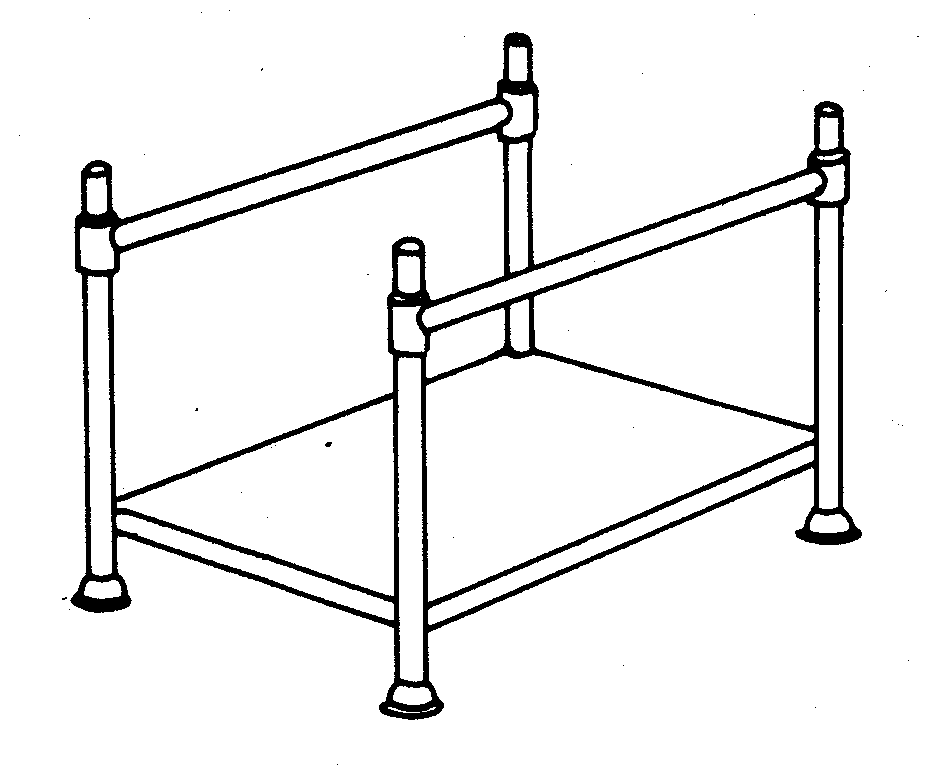
Figure 32. Post pallet

Figure 33. Box pallet
A pallet converter, shown in Figure 34, is used with an ordinary flat pallet to achieve the same purpose as a post or box pallet.

Figure 34. Pallet converter .
The flat pallet is the most common type of pallet in general use in the fishing industry and can be of reversible or non-reversible type and of two-way entry or four-way entry. The reversible pallet shown in Figure 35 has identical top and bottom decks either of which can be load bearing and is of strong construction. It is not suitable for use with pallet trucks and is of two-way entry. The non-reversible pallet has only a load bearing top deck and is suitable for use with pallet and fork lift trucks. The two-way entry pallet consists of a top deck, three full length bearers and a suitably spaced bottom deck as shown in Figure 36.
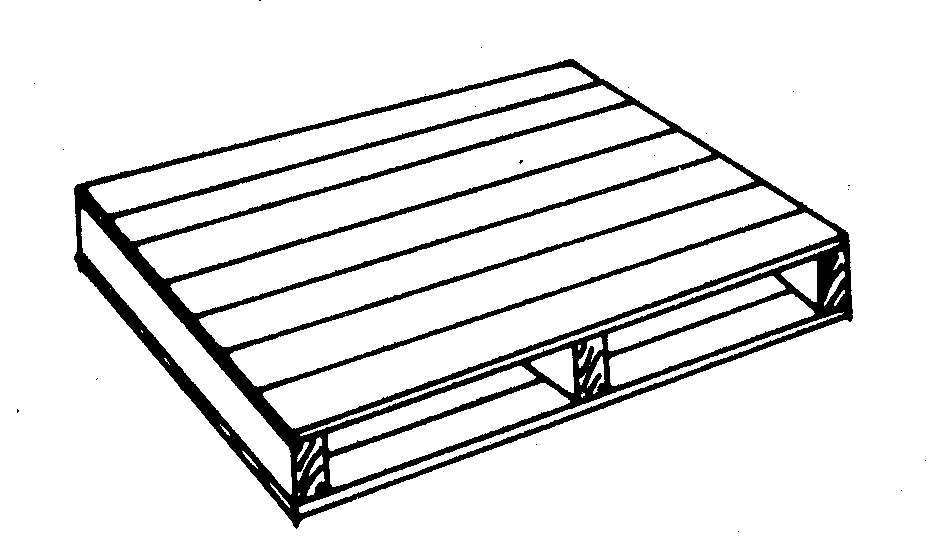
Figure 35. Two-way entry reversible
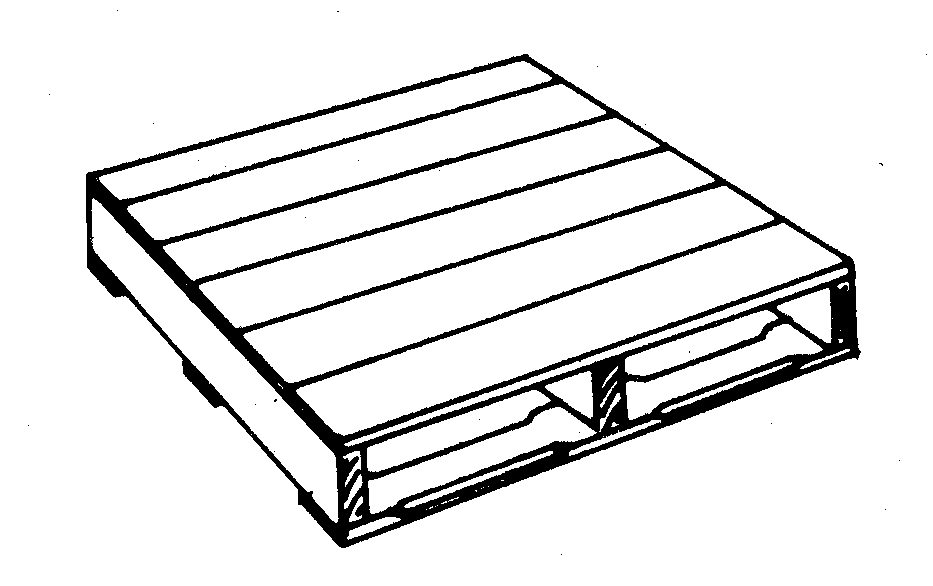
Figure 36. Two-way entry non-reversible
The four-way entry pallet which has advantages in handling consists of a top deck, 9 spacing blocks and 3 transverse stringers as shown in Figure 37. It is not as strong as a two-way entry pallet but may be strengthened by additional slats to the base to form a perimeter base or cruciform base pallet as shown in Figure 38.
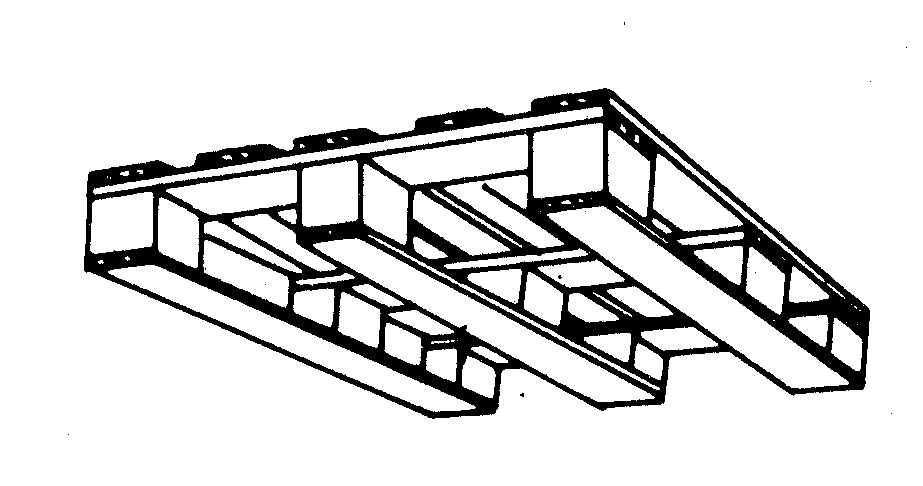
Figure 37. Four-way entry pallet
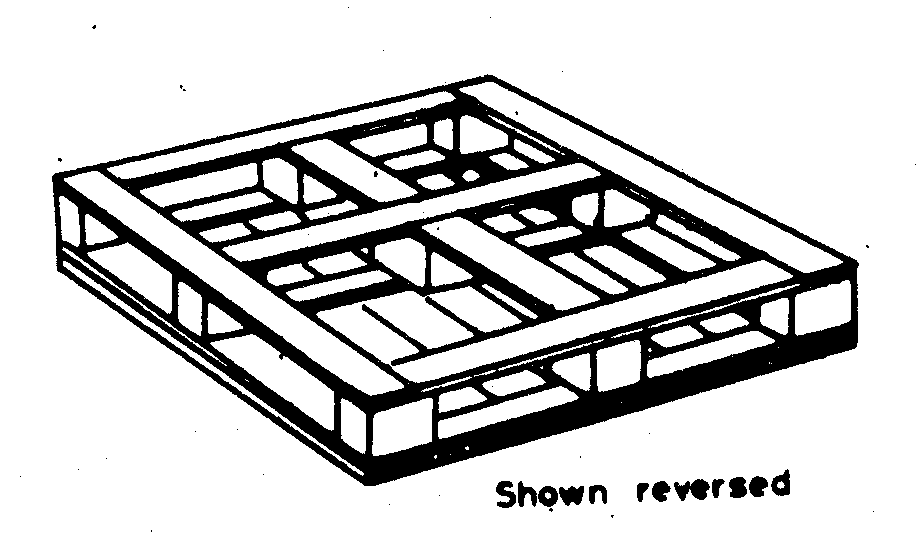
Figure 38. Four-way entry pallet with cruciform perimeter base
Winged pallets are pallets designed with decks that extend beyond the outer bearers for lifting by crane with spreader bar slings.
Wooden pallets may be specified in hardwood, which is better suited to rough handling or softwood and may have an unplaned or planed deck of open-boarded or close-boarded construction.
For use with pallet trucks the edge to the bottom deck may be chamfered to facilitate the passage of the load wheels of the truck.
Timber pallets may be of soft or hardwood but must be of good commercial quality that complies with international standards in respect to grain, knots, resin, splits and bark pockets. If screws are used in the manufacture they should not be hammered in and if nails are used they should be of the annular ring type.
As with fish boxes, timber is not well suited for applications in a wet environment as the pallets absorb water which can weaken and damage them as well as making them difficult to clean. The low first cost compared with other materials however has resulted in its continued use in the processing industry.
Plastic pallets are available which have many advantages over the timber pallet baring first cost. Plastic pallets are smooth. do not absorb water (and hence have a constant tare weight), are easy to clean and have longer life. Unfortunately the high first cost and the requirement frequently to leave the factory and be possibly lost has restricted its use.
Other than that it is ideally suited for use in the processing industry.
Metal pallets are available suitable for use in a wet environment if properly protected, and designed so as not to damage tiled floors. Neither mechanical fasteners nor welding, fillets should project above the deck surface to an extent greater than the thickness of the deck materials. If the pallet is galvanized the surface should not be excessively rough.
The following table lists the ex-works cost of four-way entry pallets based on an order of 100 pallets. A slight reduction would be available in most cases for larger orders.
Table 22 Four-way pallet costs
Type |
Material | Size (mm) | Cost (US$) |
| Non-reversible flat Non-reversible flat Non-reversible flat Non-reversible flat Reversible flat Reversible flat Reversible flat Reversible flat Non-reversible flat Box with lid and drain a/ Box with lid and drain a/ Box with lid and drain a/ Box with sheet sides Box with sheet sides Post Post |
Timber Timber Timber Timber Timber Timber Timber Timber H D polyethylene H D polyethylene H D polyethylene H D polyethylene Steel with painted finish Steel with galvanized finish Steel with painted finish Steel with galvanized finish |
800 x 1 200 1 000 x 1 200 1 200 x 1 200 1 800 x 1 200 800 x 1 200 1 000 x 1 200 1 200 x 1 200 1 800 x 1 200 1 000 x 1 200 800 x 1 200 x 825 930 x 1 250 x 720 1 120 x 1 530 x 885 1 000 x 1 200 x 850 1 000 x 1 200 x 850 1 000 x 1 200 x 850 1 000 x 1 200 x 850 |
|
a/ Suitable for iced fish or ice chilled water and fish
The working life of a pallet depends entirely on its usage. the degree of rough handling it receives and its likelihood of loss. The life of a plastic pallet will be many time. that of a timber pallet justifying its high first cost if loss is not a serious problem.
Metal pallets will have a life between that of wood and plastic.
Plastic pallets can be distinctively coloured or permanently marked for identification to assist recovery and have little alternative use unlike the timber pallet that can be burnt for firewood or used for other purposes.
The International Organization for Standardization has recommended the following plan
dimensions for standard pallets: 800 x 1 200, 1 000 x 1 200,
1 200 x 1 200, 1 200 x 1 600 (maritime use) and 1 200 x 1 800 mm. Each pallet can be
specified for loading of 1 000, 1 500 or 2 000 kg.
The standard plan sizes are designed for loading of transport vehicles for industry in
general and unfortunately are not always well suited for handling of fish in boxes. If
standard flat pallets are to be used for handling fish in boxes consideration should be
given in selection of pallet size to the stacking plan on the pallet for optimum
utilization. For example the 600 x 368 x 214 mm plastic box commonly used for small
pelagic species fits well on the 1 000 x
1 200 (as shown in Figure 39), 1 200 x 1 200 and the 1 200 x 1 800 mm pallets.
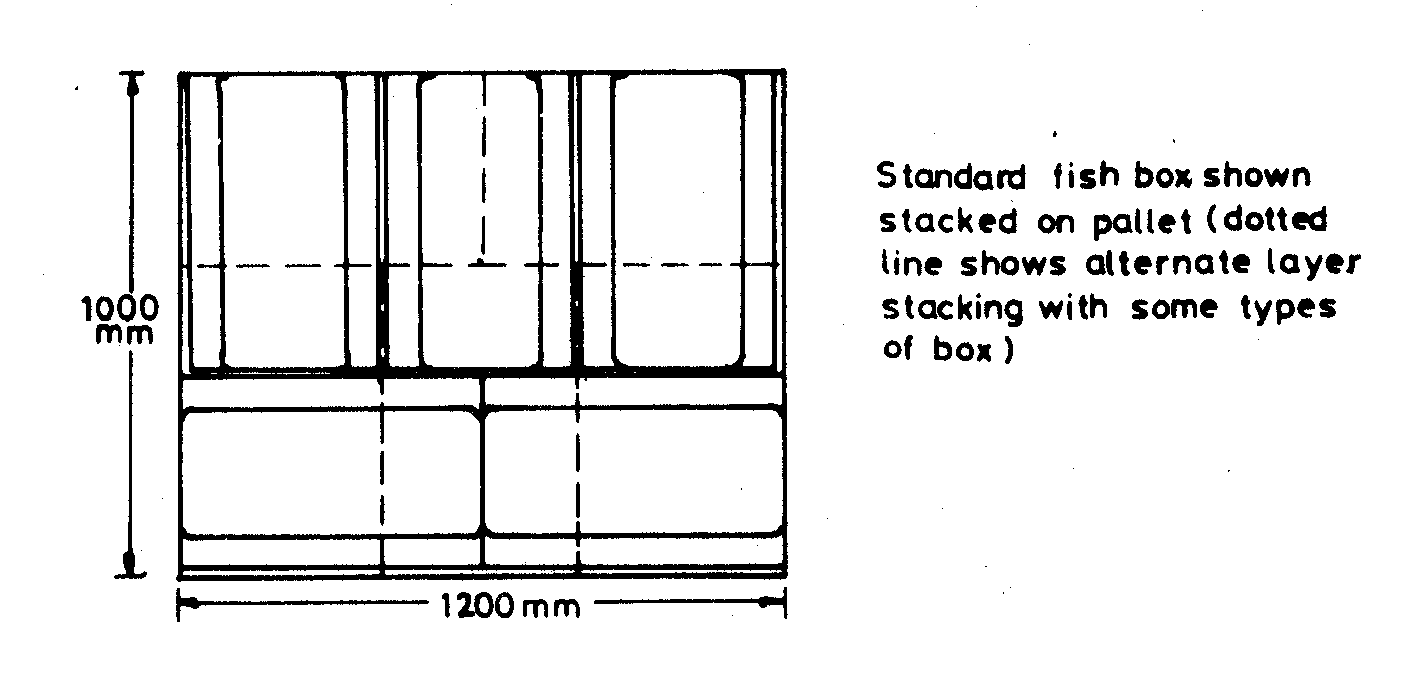
Figure 39. Pallet stacking plan for fish boxes
Some manufacturers of plastic boxes produce pallets and stillages not necessarily to ISO specification to suit their range of fish boxes.
Depending on the base design of the box subsequent layers of boxes may be repeated on the same plan or 'mirror imaged' as shown dotted in Figure 39 to give better stability.
For handling of fish in bulk particularly from the market box pallets often offer advantages in handling and storage.